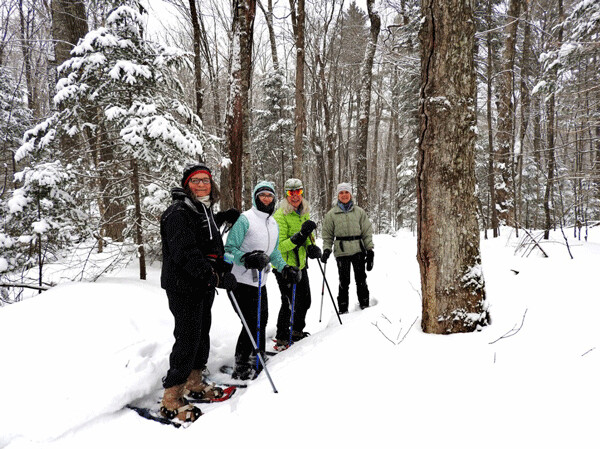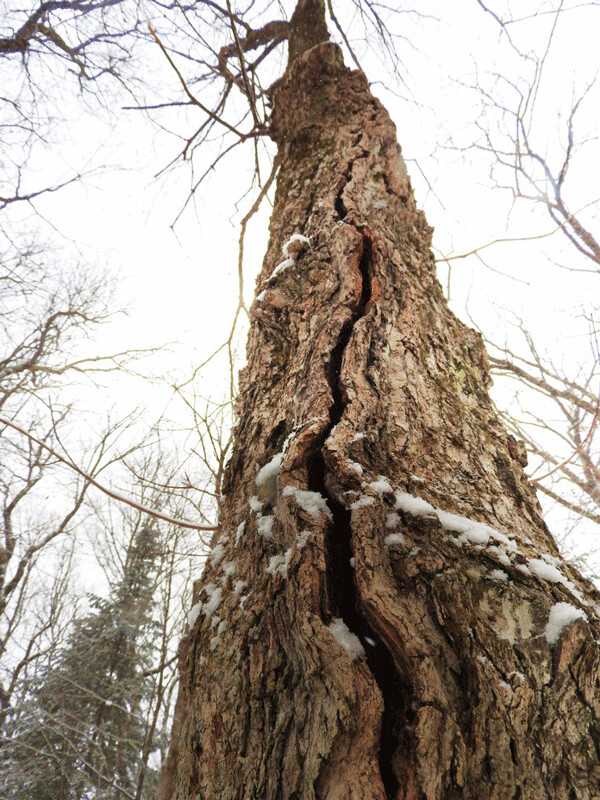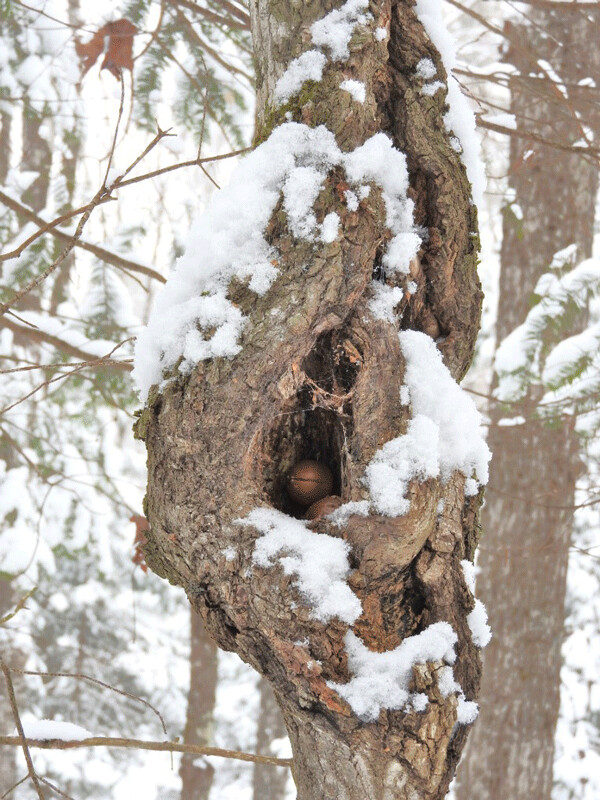News & Articles
Browse all content by date.

Fresh snow highlighted every twig, and more flakes floated down as we hiked through the Rainbow Lakes Wilderness Area on the North Country Trail (NCT). This intrepid group of women calls themselves the NCT Navigators, and they meet almost every Monday (when the mosquitoes aren’t out) to hike a section of trail. Most of them have completed the NCT’s 100-mile challenge. Most of them are retired, too, and I count myself lucky to fit in a hike with them even a few times a year.
Today the fresh snow was making the ski trails slow, and I was looking for inspiration, so I gave my friends an assignment: find me something to write about! Well, this artistic group had already gotten in the habit of noticing patterns in nature, and it wasn’t long before someone keyed in on an adorably squiqqly line snaking up the length of a tree.

A frost crack! Of course. What a perfect topic for a winter day. Long ago I learned that these cracks burst open with a noise like a rifle shot as a sunny day plunges into a frigid night. I couldn’t remember, though: was it the contraction of cooling wood, or the expansion of ice that caused the trunk to split? Both make sense. I pondered this as we hiked along, and also tried to spot more cracks throughout the forest. It wasn’t hard. While not on every tree, I could see a long, vertical welt from just about any point on the trail. Quite a few of the cracks had their upper terminus at a scar where a branch had fallen off, or some other blemish on the tree.
Back at the office, I sought a more complete explanation. My initial research was frustrating, though, since the sources all gave multiple explanations of frost cracks. Yes, it seems to involve the low-angled winter sun shining heavily on the southwest side of a tree. The bark and inner wood both warm up and expand. When the sun sets and the temperature drops, the outer bark contracts more quickly than the inner wood, and suddenly becomes too small a sheath for its core. The bark and first layer of wood split.
Another part of the explanation is that the heat causes the tree’s cells to break dormancy. Trees winterize their living cells in a few ways (dead cells, which compose most of the wood, just freeze). Cell membranes become more flexible, which allows water to migrate out of the cells and into the intercellular spaces where it can freeze without harm. Trees also fill their cells with sugar in order to lower the freezing point of their remaining liquid. And, like magic, the syrup inside the cells supercools to a glass-like phase where it is so viscous that it appears to be solid, while not forming sharp crystals. In a sun-warmed tree, water may begin to move into places it shouldn’t. As the tree re-freezes, water shifts around and freezes quickly and unevenly, causing stress on the wood and opening the crack.
A few sources mentioned that frost cracks are often associated with previous damage to the tree, but the process didn’t fully make sense until I read an interview with a plant pathologist in Northern Woodlands magazine. Walter Shortler and his mentor, Alex Shigo, did a sort of forensic pathology for trees. They used a chainsaw to slice up thousands of logs to get to the bottom—or the top—of the frost crack issue.

The result? Shigo found that “All radial shakes [cracks along the radius of the tree] were associated with wounds, branch stubs, or basal sprout stubs, and with ring shakes [cracks that follow tree rings] at some point in the trunk.” Almost anything can create an area of weakness: fire, damage during logging operations, poor pruning techniques by humans, gnawing rodents, rubbing deer, root rot, basal sprouts, or branch stubs that didn’t heal. Trees that are damaged when young seem to be much more prone to later frost cracking than older trees that become damaged.
In any case, damage to the bark and underlying sapwood provides an entry for decay. Bacteria and fungi move in, and as they decompose the wood it absorbs extra moisture. The defective wood doesn’t expand and contract as well as healthy wood, and rapid freezing finally bursts open a significant crack. Repeated freeze-thaw cycles, coupled with stress from wind, can enlarge a crack, even as the tree tries to heal it.
So, a combination of all the forces I read about likely play a role in opening and widening cracks, but none of them alone would do the job without a prior injury. This all made sense to me, especially in light of my observation that many frost cracks we saw topped out at an old branch scar.
The tree will try to heal the wound, and the growth of new wood around the crack is sometimes called a frost rib. Indeed, we admired the raised scar that highlighted our squiggly crack.
Foresters, of course, are concerned with reducing damage to young trees so that frost cracks can’t gain a foothold in what could have been valuable timber. Naturalists might appreciate a different perspective. A little ways down the trail we spotted another tree with a convoluted scar. Nestled inside were two brown acorns. I suspect that naturally occurring frost cracks may provide valuable habitat for critters in their cavities and decay. In the words of Leonard Cohen, “There is a crack in everything. That’s how the light gets in.”
For 50 years, the Cable Natural History Museum has served to connect you to the Northwoods. Come visit us in Cable, WI! Our new exhibit: “Better Together--Celebrating a Natural Community” is now open!
| Tweet |


